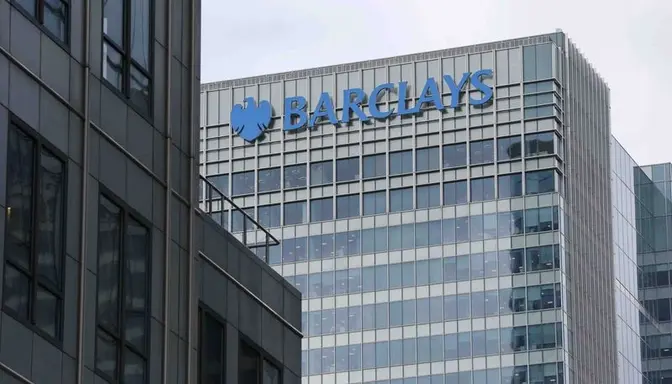The U.S. irregular immigrant population has surged to an estimated 17 million in 2024, marking its highest level since 2010, according to a recent report from Barclays analysts. While the headline figure has sparked debate on immigration policy and border control, a deeper dive into the numbers reveals a nuanced economic reality: irregular immigrants are not just present—they are essential to some of America’s most critical industries.
Irregular Immigrants Make Up Just 7% of U.S. Workforce, but Dominate Critical Sectors
Barclays’ research underscores a striking paradox. Although irregular immigrants represent only about 7% of the total U.S. workforce, their impact is disproportionately concentrated in specific sectors. In fact, in industries such as crop production and construction, they account for anywhere between 20% and 30% of total labor.
Here’s a breakdown of the most affected industries, according to Barclays’ analysis:
- Crop production: 22-31%
- Private household services: 22-30%
- Construction: 15-21%
- Apparel manufacturing: 13-19%
- Food manufacturing: 12-17%
Moreover, certain individual occupations rely even more heavily on this workforce. For example, positions such as graders, roofers, and packers may see nearly 50% of their labor force made up of irregular immigrants, Barclays notes.
Why These Workers Are Indispensable
The report describes irregular immigrants as “the backbone of key sectors,” a phrase that cuts through the political noise to highlight the economic reality. These workers are essential to industries that are labor-intensive, physically demanding, and often suffer from chronic labor shortages.
Agriculture and food production, for instance, require a workforce that is both large and flexible. Many U.S.-born workers are reluctant to take on the strenuous, seasonal work involved in crop harvesting, creating a dependency on irregular immigrant labor to keep farms running and food supply chains intact.
Construction tells a similar story. A housing boom, coupled with infrastructure spending, has fueled demand for laborers, roofers, framers, and other skilled trades. Without a steady flow of workers—including those without legal status—construction timelines could stretch out, driving up costs.
A Major Influx Between 2021 and 2024
Barclays’ report also highlights the sharp increase in irregular immigration over the past three years. The bank estimates that between 2021 and 2024, approximately 8.4 million new irregular immigrants entered the United States. Of these, about 5.2 million are estimated to have entered the workforce.
These figures are based on data compiled from the American Community Survey (ACS) and Barclays’ proprietary immigration tracker, which synthesizes official statistics with private-sector analytics.
This surge has coincided with a period of economic expansion and labor shortages, particularly in industries that struggled to refill positions in the aftermath of the pandemic. For many employers, irregular immigrants have been a critical stopgap, helping to stabilize sectors that otherwise faced operational disruptions.
Policy Shifts and Enforcement Slowdowns
Interestingly, the labor influx was also facilitated by changes in enforcement priorities. Barclays points out that U.S. Immigration and Customs Enforcement (ICE) has scaled back interior arrests under the current administration. For example, daily interior arrests averaged 650 per day during the first month of the Trump administration, but this figure dropped to roughly one-third of that under the Biden administration.
This policy shift allowed irregular immigrants greater mobility within the country, contributing to the labor force in sectors that might have otherwise faced acute shortages.
But a Sharp Decline Is on the Horizon
However, the trend may already be reversing. Barclays’ report flags a dramatic slowdown in net irregular immigration, especially humanitarian entries. In December 2024, net irregular immigration slowed to 74,000, down from 310,000 in December 2023.
The analysts attribute this decline to a combination of tighter border security and impending executive actions expected to be rolled out in 2025, which could potentially reduce net irregular immigration flows to zero.
What This Means for the U.S. Economy
A declining pool of irregular immigrant workers could spell trouble for the broader U.S. economy. Barclays cautions that this reduction will likely constrain labor supply in industries that are already struggling to attract and retain workers.
The analysts argue that U.S.-born workers, authorized immigrants, and irregular immigrants complement one another, rather than acting as substitutes. In other words, removing one group from the labor equation won’t automatically free up U.S.-born workers to step in.
Instead, businesses may face rising labor costs, as they are forced to either pay higher wages to attract a dwindling labor pool or contend with lower productivity due to unfilled roles. These higher input costs will likely be passed on to consumers, further fueling inflationary pressures, especially in sectors like food, housing, and construction.
The Inflation Link
As sectors such as food manufacturing and construction grapple with labor shortages, the potential knock-on effect could be felt in consumer prices. Reduced agricultural labor supply, for instance, could limit harvest yields or slow down food production, pushing up prices at the grocery store.
In the housing sector, fewer available construction workers could delay homebuilding projects and exacerbate existing housing supply shortages, further inflating real estate prices and rental rates.
Barclays warns that this labor squeeze could be another piece of the puzzle in explaining why core inflation remains sticky, despite Federal Reserve efforts to bring it down through interest rate hikes.
Beyond Economics: The Social Impact
While Barclays’ report focuses on the economic implications, the social dynamics are just as significant. Irregular immigrants often live in mixed-status households and communities, contributing to local economies not just as workers, but as consumers, tenants, and parents.
A rapid contraction in this population could have ripple effects beyond GDP and inflation. Local economies in regions heavily dependent on sectors like agriculture and construction—especially in states such as California, Texas, and Florida—may feel the brunt of any labor shortages first.
What’s Next?
With new executive orders aimed at curbing irregular immigration flows expected soon, Barclays anticipates a critical inflection point for sectors reliant on this workforce.
Employers may need to rethink labor strategies, including investing in automation where feasible, increasing wages, or lobbying for more flexible immigration policies, such as expanding temporary work visas.
In the meantime, consumers could see the indirect effects on their wallets through higher prices in everything from fresh produce to housing.
Final Thoughts
The conversation around irregular immigration is often dominated by politics, but Barclays’ report provides a crucial reminder: these workers play an outsized role in keeping key sectors of the U.S. economy running.
With irregular immigration slowing and labor shortages deepening in critical industries, policymakers and businesses alike will need to grapple with the economic trade-offs. Whether through immigration reform, labor market adjustments, or sector-specific solutions, the challenge ahead is clear—maintaining productivity and price stability in a tightening labor market.



